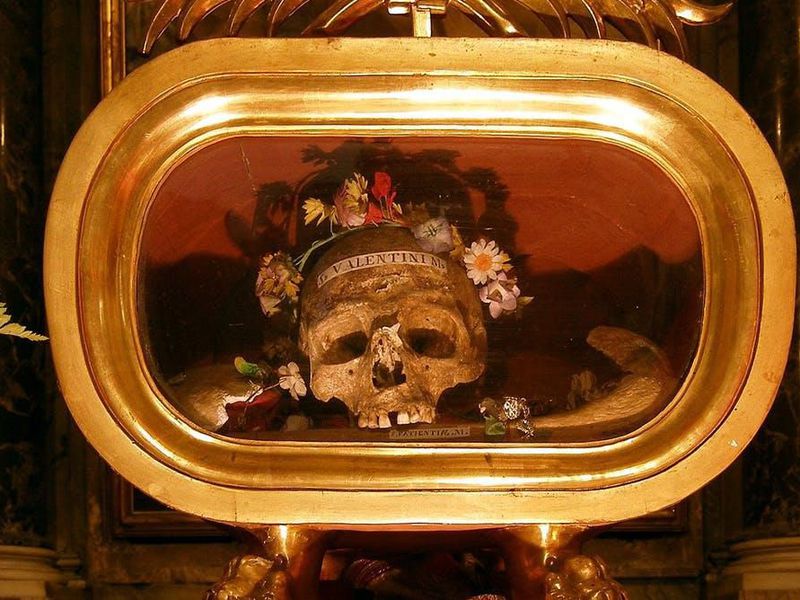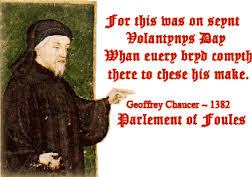A Brief History of Saint Valentine’s Day
Reading time: 5 minutes
When one hears the word “Valentine”, many things may spring to mind, but the feeling of love is sure to be among them; from greeting cards, chocolates, romantic dinners, and anonymous declarations of amorous affection, Valentine’s Day has indeed become an entrenched part of many Western cultures.
And yet an examination of its namesake (or several), reveal a history tinged with tragedy and death, that is anything but loveable. It would seem unlikely that many centuries later a public holiday would emerge and that the name Valentine would have any significance, but the power of mythology has long proved its effect on generations of storytellers.
By Michael Vecchio
Although up to eleven historical Saint Valentines have been identified including a young woman named Valentina, it is the early 3rd century Christian priest who is widely accepted as the original. A cleric during the reign of Emperor Claudius II, Father Valentine defied orders that prohibited marriage for soldiers and conducted hundreds of nuptials in secret; when he was eventually discovered he was quickly arrested and sentenced to death, which occurred on February 14, 269 AD.
The name Valentine deriving from the Latin, valens, meaning strength, soon took on the meaning not just of physical power, but of strength of conviction. Father Valentine’s willingness to celebrate love over arbitrary orders from the Emperor made him a martyr and icon; with time the Valentine name would become another synonym for love and those who fought to defend it.
Nearly 230 years after his death, Pope Gelasius I declared Valentine a Saint in 496 AD, establishing his feast day as the 14th of February. Various relics said to be associated with him (his robe, his prayer beads) were venerated throughout the Middle Ages and transported to churches across Europe including the Whitefriar Carmelite Church in Dublin; back in Rome a skull said to be his is displayed crowned with flowers in the Basilica of Santa Maria in Cosmedin.
But this original Saint Valentine was only the starting point for the continued spread of the Valentine name and message; as Christianity rooted itself as the predominant faith in Europe, an assortment of religious leaders and other lay people emerged attempting to emulate Saint Valentine’s life and adopting his name, often being tortured, and facing their own executions.
Among the subsequent Saint Valentines include Valentine of Terni (who was also beheaded on February 14th), Valentine of Viterbo, Valentine of Passau, and a young virgin Valentina from Palestine; while not all of these figures were martyred, the available historical information on them affirms they did seek to challenge laws and traditions that inhibited marriage and displays of love, as the original Saint did.
Recognized in the Catholic and Orthodox Churches, through the centuries stories and legends about the various Saint Valentines have merged together to form a single narrative of myths and other supposed events attributed to a singular Saint Valentine. These include the curing of a blind girl and the mass conversion of prisoners by sermons delivered through the prison walls. Yet perhaps the most famous of these stories involves the original Father Valentine, who during his incarceration is said to have sent a love letter to the jailer’s daughter which he signed with “Your Valentine”.

These stories grew in popularity in the many ensuing years becoming amongst the first examples of widespread urban myths; regardless of the veracity of some of these tales, Saint Valentine and love became intrinsically tied and the evolution of Valentine’s Day began.
As the concept of courtly love flourished in medieval times, so too did literature and poetry promote the “season of love”. Around the middle of February in coordination with the mating patterns of birds, the great English poet Geoffrey Chaucer has been said to have contributed to the creation of “Valentine’s Day” after the publication of his poem Parliament of Fowls in 1375.
Chaucer references February 14 as the day that birds and humans join together to find a partner, writing “For this was sent on Seynt Valentyne’s day / Whan every foul cometh ther to choose his mate.”
Other possible inspirers include Charles Duke of Orléans, who as a prisoner in the Tower of London in 1415 wrote to his wife that he was “already sick of love” (lovesick.) He further called her his “very gentle Valentine.”; even Shakespeare made mention of Valentines through the character of Ophelia in Hamlet.
By the 19th century, February 14 increasingly became a date to commemorate love, and with the onset of the Industrial Revolution, gifts, cards, and other confectionaries were easier to be mass produced and distributed; the Hershey and Cadbury chocolate companies were established during this time, taking full advantage of the growth in demand for sweets.

Based on legends of a Roman citizen (or many of them) and many centuries in the making, St. Valentine’s Day stands today as the ultimate emblem of romantic love; the path to candies and cards may have been a long and unlikely one, but regardless of the historicity of the Valentine story, its effect on Western society cannot be negated.
Podcast episodes on this topic
Articles you may also like
The text of this article was commissioned by History Guild as part of our work to improve historical literacy. If you would like to reproduce it please get in touch via this form.








